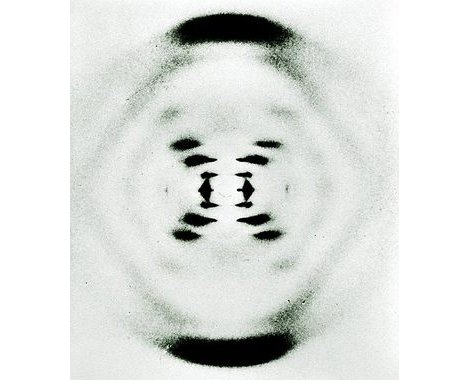This post is about the first pictures ever taken, from the first ever picture, to the first digital image right up to the modern day taking the first ever picture of a black hole. In the modern era, it is easy to take photography for granted. Image capture technology exists on our phones and tablets, able to capture images in increasingly higher resolutions and shared around the globe in seconds. It is incredible to think of the experimentation and endeavour required to produce the technology that today we largely take for granted. In 1717 Johann Heinrich Schulze began experimenting with chalk solutions that darkened when exposed to light, then the pioneering work in the early 1800s of Niepce, Daguerre and Fox Talbot allowed for photographs to be fixed led to the invention in 1888 of the first commercially available camera. Three hundred years of innovation has led us to this point in history, and photography has played a huge part in shaping our cultural landscape and collective memories. To celebrate the incredible history of photography, I have assembled a collection of ‘firsts’ that celebrate photography and the camera’s place amongst our society. These images are of landmark moments in our civilisations development and are able to live on through the ages, all thanks to the work started by enquiring minds over 300 years ago.
#1. The First Photo Ever Taken
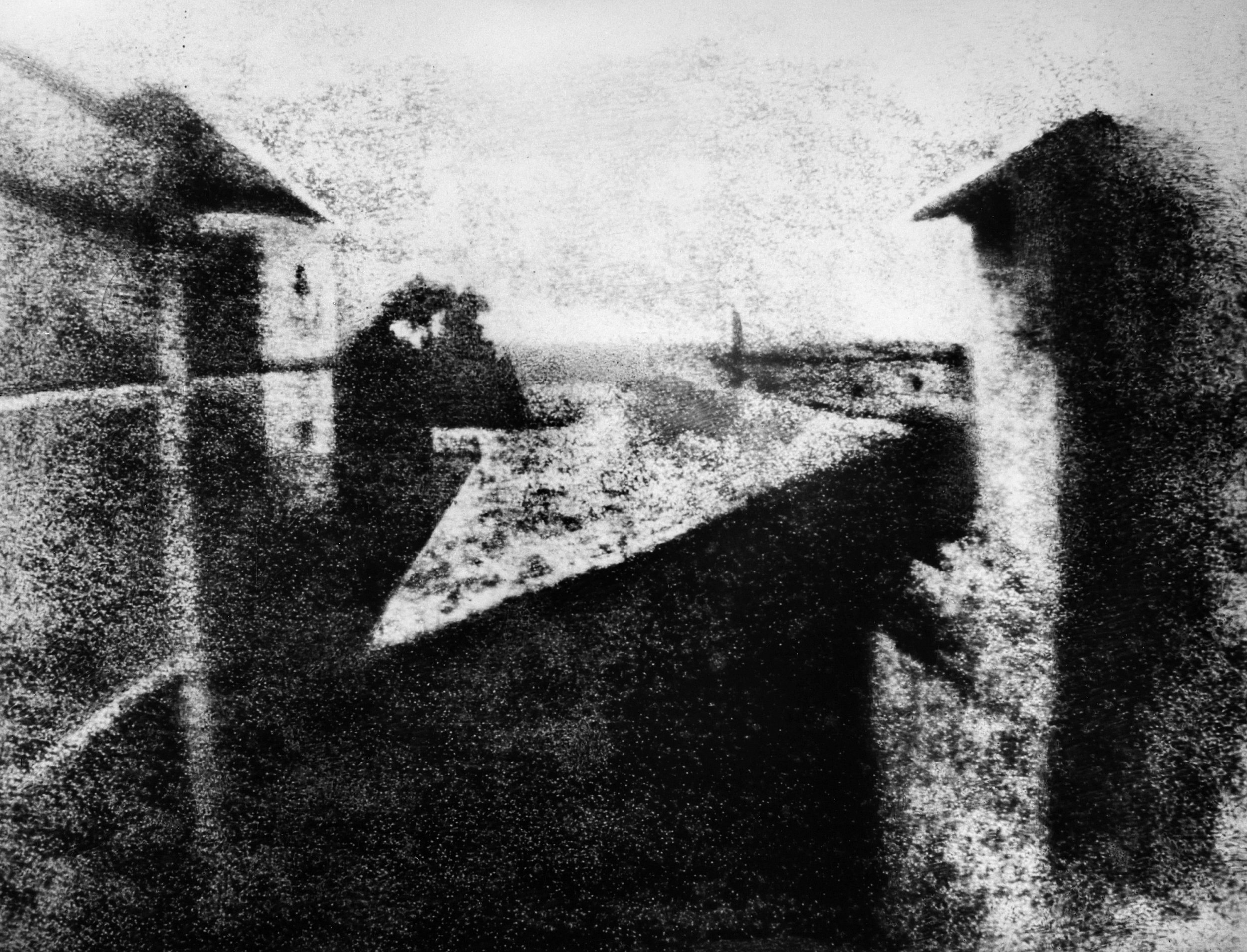
The first ever photographic image captured via the use of a camera and optics was made in either 1826 or 1827 by Joseph Nicéphore Niépce and is titled “View from the Window at Le Gras”. The first ever photo taken was from the upstairs windows of Niépce’s estate in the Burgundy region of France.
Around 1822 he experimented with Bitumen of Judea, a derivative of asphalt. Normally bitumen dissolves in oil of lavender but, once exposed to light, it becomes hard and insoluble.
Niepce started by oiling an engraving to make it transparent, then he put it on a glass plate coated with the bitumen and oil of lavender solution and exposed it to the light. The dark lines of the engraving held back the light while the blank areas let it through. When he washed the plate in lavender oil and turpentine solution the areas on the plate corresponding to the lines of the print remained soluble and washed away. Niepce later experimented with pewter plates and achieved his final goal – the making of the first picture with the camera – sometime between 1826 and 1827. He triumphantly called his new process Heliography, from the Greek Helios meaning ‘of the sun’.
#2. The First Colour Photograph

You may remember James Clark Maxwell from your days of studying Physics at school, he is most famous for his work in the field of electromagnetism, being celebrated as developing the greatest unification theory in Physics since Isaac Newton, some accolades indeed!
In 1666, Isaac Newton experimented with splitting sunlight using a prism to show that it was actually a combination of the seven colours of the spectrum. In 1861, Maxwell conducted an experiment to show that any and all colours can be made by mixing red, green and blue light.
Maxwell took three separate lantern slides of a tartan ribbon through red, green and blue filters.
What’s a lantern slide? I don’t know either so I looked it up
“The lantern slide is a positive transparency that can be projected. It comprises the photographic emulsion containing the image, which is bound to a glass plate and covered by another thin layer of glass; the plates are then secured with strips of gummed paper tape. Various processes are used to create lantern slides including the albumen, wet plate collodion, gelatine dry plate and woodburytype methods”
The slides were then placed upon three separate lanterns and projected onto a screen. When the images overlapped on the screen they combined to make a coloured image.
Below is an example of how this works. Taking three separate images with a red, yellow and blue filters, then projecting these images with the corresponding coloured light on top of each other, combining to create the full colour image, lovely.

#3. The first 35mm colour film
1936.
Experimentation with colour film had been ongoing since the 1890s based upon Maxwell’s theories put forward in the 1860s. Individuals had varying success, however it wasn’t until April 15th 1935 that the first Kodachrome film went on sale for use in 16mm cine cameras. The following year 35mm film became available in America, in 1937 it found its way to Britain.
Who invented Kodachrome? Kodachrome was invented by Leopold Mannes and Leopold Godowsky. Professional musicians by trade, they experimented with colour photography processes in their spare time, how about that? Invent something just for fun. They hit a roadblock and in 1922 sought the outside help of Dr C E Kenneth Mees, director of the Eastman Kodak research laboratories in Rochester, New York.
Kodachrome is essentially a black and white film to which coloured dyes are added during processing. The process itself was incredibly complicated and involved multiple stages of developing, dying and bleaching. In total it required 28 different stages, all of which had to be completed under lab conditions.

1877 – A colour photographic print by Louis Ducos du Hauron, a French pioneer of colour photography. If you examine the edges of the print the cyan, yellow and red overlapping can be seen.

A 1914 colour photograph of the Taj Mahal published in a 1921 issue of National Geographic magazine
#4. The First Digital Photograph
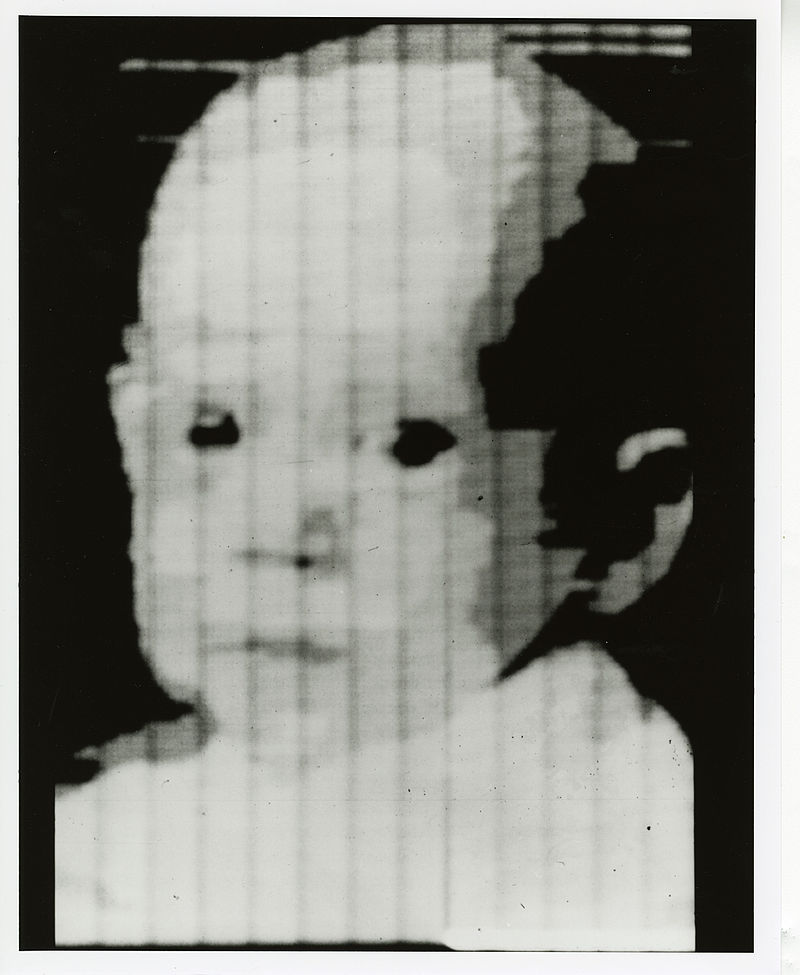
Almost 20 years before the invention of the first commercially available digital camera, the first digital photograph was taken in 1957. The original photograph was taken on film before being scanned and depicts Russell Kirsch’s son. The image only has a resolution of 176×176 pixels, the computer used to display the scan had no means of storage so the tiny resolution is all it could handle.
#5. The first photograph of a black hole
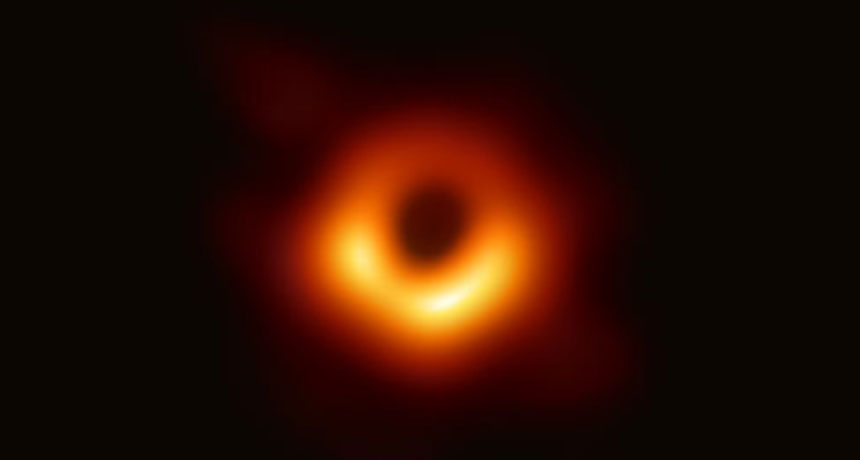
Another huge moment for the world of women in science, Katie Bouman led the development team who wrote the algorithm that made this image possible. Albert Einstein first predicted the existence of black holes in 1916, the term “black hole” however was coined many years later in 1967 by astronomer John Wheeler. It’s an incredible feat that in 2019 this image was made possible, in just under 100 years from theory to visualisation. This black hole is 55 million light-years from Earth in a galaxy called M87. Considering black holes. The gravity around a black hole is so strong that nothing, not even light can escape from it. Considering photographs need light, this photograph is beyond brilliant, beyond genius. Bouman rightly takes her seat in history as a true pioneer.
#6. The First Photograph containing a person

Check out the bottom left of the image…
One would imagine that the image would be a portrait, a deliberate capture of a person. The truth however, is that this image, captured by Louis Daguerre, depicts what can only be assumed to be a man having his shoes polished. Due to the low sensitivity of the film the exposure lasted around seven minutes. Daguerre intended to capture the Boulevard du Temple, a thoroughfare in Paris, France. Due to the shutter being open for such a long time, all of the people on the street weren’t captured, except for the one person standing still.
It’s bananas how sheer fluke landed whoever this person is in the history books, quite cool how it remain one of life’s mysteries as no one will ever know who he is
#7. The First Ever Self Portrait Photograph

The portrait depicts Robert Cornelius in 1839, supposedly taken outside his father’s gas lamp-importing business in Philadelphia. A student of chemistry and metallurgy, upon learning of the daguerreotype process, Cornelius applied his knowledge of both chemistry and his experience with polished metals to perfect the plate process. It is estimated that he must have sat still for this portrait for between ten and fifteen minutes.
What is most cool about this image, is that he wrote upon the back of it “The first light Picture ever taken. 1839.”
#8. The First Hoax Photograph
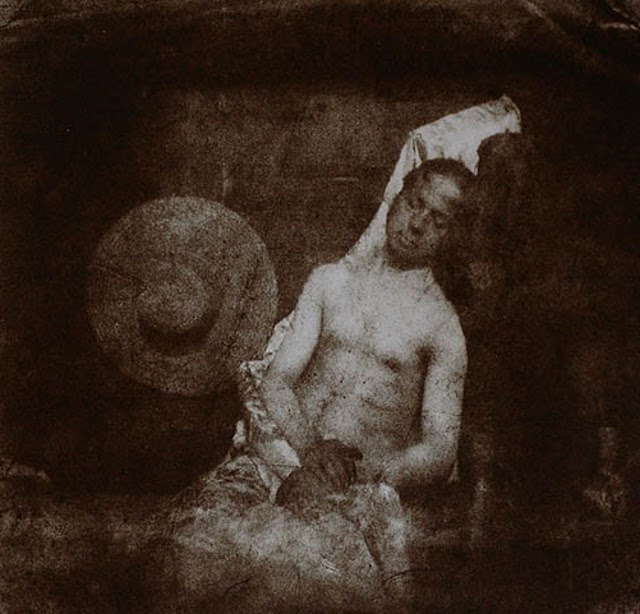
The image titled “Self Portrait as a Drowned Man”, depicts Hippolyte Bayard, a french inventor and pioneer of photography. Bayard developed his own direct positive process, which he claimed preceded the work of Daguerre and Fox-Talbot, making him the rightful owner of the title ‘inventor of photography’.
The story goes that Bayard demonstrated his process to a man named Francois Arago. Arago convinced Bayard to delay the announcement of his findings in order to maximise its impact at a more opportune moment. Arago, however, was a secretary of the Academy of Sciences in France, bit more importantly to the story, a friend of Daguerre’s.
Delaying the announcement gave Daguerre the opportunity to deliver his findings and cement himself as the principal inventor of photography.
In protest, Bayard staged a photograph depicting his ‘corpse’. On the back of the photo was this statement:
“The corpse which you see here is that of M. Bayard, inventor of the process that has just been shown to you. As far as I know this indefatigable experimenter has been occupied for about three years with his discovery. The Government which has been only too generous to Monsieur Daguerre, has said it can do nothing for Monsieur Bayard, and the poor wretch has drowned himself. Oh the vagaries of human life….! … He has been at the morgue for several days, and no-one has recognized or claimed him. Ladies and gentlemen, you’d better pass along for fear of offending your sense of smell, for as you can observe, the face and hands of the gentleman are beginning to decay.”
Intended to deceive the viewer and the public into believing that he had committed suicide, I love that Bayard tapped into one of the most discussed and disputed philosophical elements of photography seemingly as soon as it was invented, one of truth. Also, how he has essentially trolled his nemesis for stealing his crown, the pettiness of clever people will never stop being funny.
#9. The First Aerial Photograph
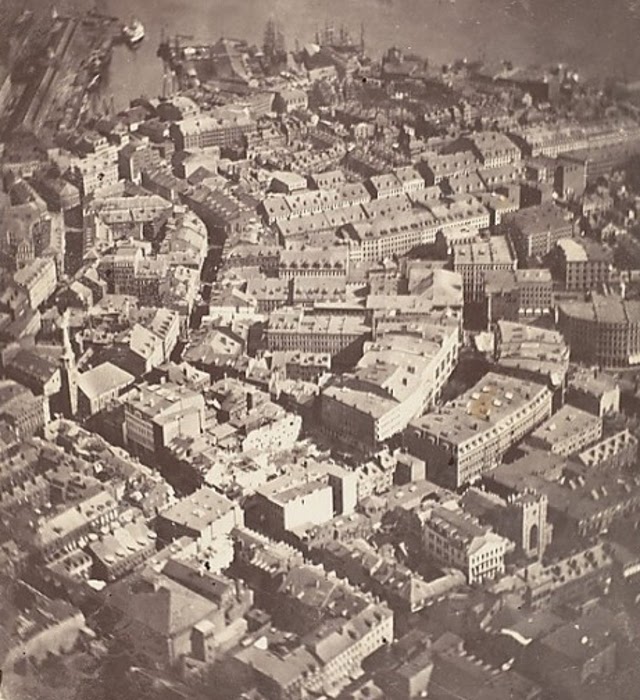
Before drones, there were hot air balloons. Believe it or not, in 1858, the nutcase Gaspard-Félix Tournachon decided to take the incredibly heavy and cumbersome photographic technology of the day into a hot air balloon to start taking aerial photographs of Paris. Sadly, none of his photographs survived and as such, he is credited with the first aerial photographs without physical proof. However, another nutcase, James Wallace Black took these photographs from a balloon from 2,000 feet in the air above Boston (to give some historical context, the Wright brothers weren’t even born yet) titled “Boston, as the Eagle and the Wild Goose See It”, the originals are currently in the possession of the Met Museum.
#10. The First Photograph of the Sun

On April 2nd, 1845, the first photograph of the sun at the centre of our solar system was taken by French Physicists Louis Fizeau and Leon Foucault. Using the Daguerreotype process, even with the slow reactivity of the plates to light, when pointing directly at the sun, the exposure time was a respectable 1/60th of a second. The coolest part of the picture? The dark patches are sunspots, first seen through a telescope in 1610 by Thomas Harriot, sunspots are regions of reduced surface temperature caused by concentrations of magnetic field flux that inhibit convection.
#11. The First Photograph of Earth from Space

Taken by the V-2 #13 rocket, launched on October 24th, 1946. At an altitude of 65 miles, the camera, which was a 35mm motion picture camera, took a photograph every one and a half seconds during the rocket’s ascension.
It’s easy to take images of the solar system for granted considering the huge leaps that technology has taken in the last seventy years, it’s impossible to comprehend the significance that this image had at the time it was taken.
This image would have taken millions of dollars worth of technology and who knows how long to develop. It boggles the mind to think that for around $150 today, you could build a device that can capture a better quality image with a hacked digital camera attached to a weather balloon.
The V2 rocket fell to Earth and at 500 feet per second and smashed into the desert, most importantly for us, the film survived the crash, giving scientists a view of Earth from five times higher than any photo ever taken before.
Over the subsequent four years from 1946 to 1950 more than 1000 photographs were taken from multiple cameras aboard the various V2 rockets. This image was taken by V-2 Number 21 from 101 miles up in 1947.
#12. The First Presidential Portrait

This image of John Quincy Adams (the sixth President of the United States), taken in 1943, was the first photograph ever taken of a president. It’s not the first ever taken of a sitting president, as Adams left office in 1829. The first sitting presidential portrait was of James Polk, the 11th President, who was photographed in 1849.
Technically, the first photograph of a sitting United States president was taken of William Henry Harrison on March 4, 1841. However, this image has been lost to history, so all we are able to go on is what has survived.
#13. The First Photograph of a Lightning Strike
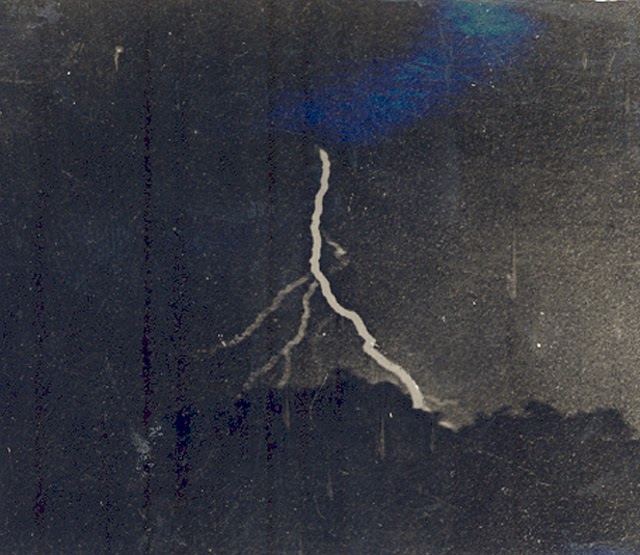
Anyone who’s tried will know that lightning can be frustrating, although eventually rewarding, subject to photograph. The biggest advantage of shooting lightning with early photography technology is that the slow reactivity of the plates would have meant that a long exposure time would be necessary. Meaning you could open the shutter and wait, knowing that the low sensitivity plate wouldn’t pick up any other light source. Once the lightning strike occurs, close the shutter and develop the plate. In 1882 William Jennings took this image, his findings arguably influenced the entire art world as they clearly display the fork-like nature of a lightning strike.
#14. The First Photograph of Earth from the Moon

Lunar Orbiter 1 took this image of the earth whilst orbiting the moon on August 23rd, 1966. It then transmitted the image back to base at Robledo De Chervil, near Madrid in Spain.
#15. The First Photograph from Mars

July 20th, 1976 – Viking 1 transmits this image back to Earth shortly after landing on the red planet. NASA’s mission was to obtain high-resolution images from the surface of Mars , analyse it’s landscape and its composition.
#16. First photo of DNA

On 6 May 1952 superstar female scientist Rosalind Franklin photographed her fifty-first X-ray diffraction pattern of deoxyribonucleic acid, or DNA, at King’s College in London, England. She died four years before the work she did was recognised by the Nobel committee, sadly, they didn’t award the prize to her posthumously, only awarding her team.
#17. The first photograph shared on Instagram

Since its launch in 2010, Instagram has amassed over a billion users. It would be wonderfully poetic if it all began with a picture of a Cat, as most of the internet is founded on cat pictures. Close enough, it was a picture of a Dog that started off the Instagram phenomenon.
Kevin Systrom, one of the apps developers, photographed a stray dog sitting near a taco stand in Mexico and uploaded it to the platform, it is the first image ever shared on Instagram. Captioned ‘test’, the photograph was posted a few months before the launch to the public on October 6 2010. “Had I known it was going to be the first photo on Instagram I would have tried a bit harder,” said Mr Systrom.

